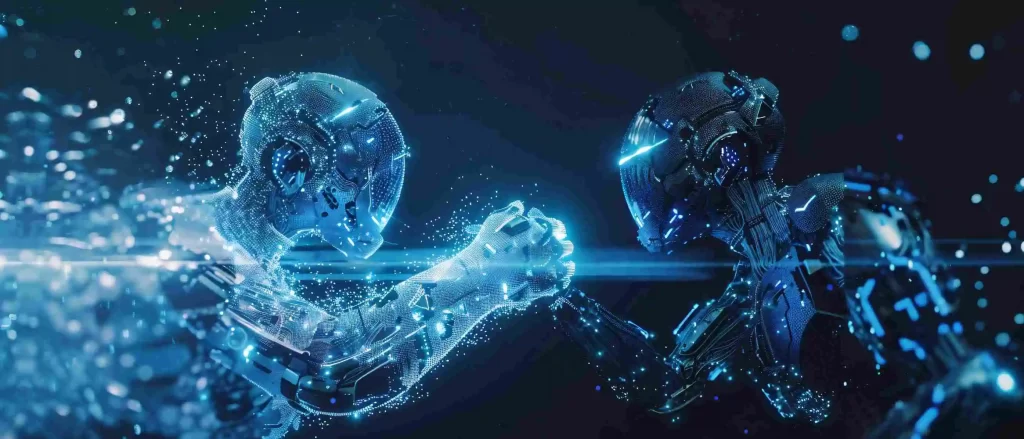Imagine this—you’re scrolling through a news feed and come across headlines that throw around terms like “AI breakthrough” or “machine learning revolution.” But if you pause for a moment, you might find yourself wondering: What exactly is the difference between machine learning vs AI ? Are they the same? Interchangeable? Or does one power the other?
In today’s tech-driven world, understanding machine learning vs AI isn’t just for computer scientists. Whether you’re a business owner, developer, or curious reader, knowing the distinction can help you make better decisions, build smarter strategies, and stay ahead of the curve.
Let’s break it down in the most digestible way possible.
What is Artificial Intelligence (AI)?
Artificial Intelligence, or AI, is a broad field in computer science focused on building systems capable of performing tasks that typically require human intelligence. This includes reasoning, decision-making, problem-solving, understanding natural language, and even visual perception.
AI aims to mimic human intelligence and behavior. It encompasses everything from self-driving cars and virtual assistants (like Siri and Alexa) to smart chatbots and advanced robotics. It’s not limited to one type of tech AI is the umbrella term under which many technologies, including machine learning, fall.
Think of AI as the larger goal: creating smart machines.
What is Machine Learning?
Now, zoom in a bit. Machine learning is a subset of AI. It refers to the process where machines are given access to data and learn from it automatically, without being explicitly programmed for every single task.
Rather than hard-coding rules, we feed algorithms large amounts of data, and they identify patterns, improve over time, and make predictions or decisions. Machine learning is behind Netflix recommendations, fraud detection systems, email spam filters, and even your social media feed.
In short, machine learning vs AI is a question of scope: all machine learning is AI, but not all AI is machine learning.
Real-World Examples of AI and Machine Learning
Let’s make it even more tangible.
Artificial Intelligence in Action:
-
Virtual Assistants: AI helps Siri, Alexa, or Google Assistant understand voice commands and respond appropriately.
-
Smart Home Devices: Thermostats that learn your schedule and adjust temperature accordingly.
Machine Learning in Action:
-
Email Filters: Spam filters learn which messages are junk based on millions of emails.
-
Product Recommendations: E-commerce sites suggest products based on browsing and purchase history.
While both use data and algorithms, machine learning is specifically about systems that learn and adapt, whereas AI can be rule-based or logic-driven as well.
Why the Confusion Between Machine Learning and AI?
The line between the two is often blurred because machine learning is the most prominent method used to achieve AI today. Most of the popular AI advancements you hear about from facial recognition to real-time language translation are powered by machine learning.
This overlap is why so many people use the terms interchangeably, but keeping the difference in mind helps in deeper understanding, especially if you’re involved in product development, analytics, or digital transformation.
Key Differences: Machine Learning vs AI
| Aspect | Artificial Intelligence (AI) | Machine Learning (ML) |
|---|---|---|
| Definition | Simulates human intelligence | Enables machines to learn from data |
| Goal | Solve tasks that require human-level thinking | Improve from data without explicit programming |
| Scope | Broader concept | Narrower subset |
| Techniques | Includes ML, deep learning, rules-based systems | Uses statistical models, algorithms |
| Example | Chatbots, robots, NLP | Image recognition, predictive analytics |
What Does This Mean for the Future?
Understanding machine learning vs AI can prepare you for where the future is headed. As industries digitize and data becomes the new oil, businesses are leveraging both AI and ML to stay competitive.
-
Healthcare: AI can assist doctors in diagnosis, while ML can predict patient outcomes.
-
Finance: AI detects suspicious activity; ML predicts credit risks.
-
Marketing: AI personalizes experiences; ML analyzes behavior for targeting.
The synergy of these technologies is transforming every sector, and keeping an eye on how they evolve could open up new opportunities for innovation and career growth.
Final Thoughts
To sum up, machine learning vs AI is not a battle—it’s a relationship. AI is the big-picture goal, while machine learning is one of the powerful tools we use to get there. By learning from data and improving over time, ML is turning AI into a reality we live with every day.
Whether you’re working in tech, running a business, or simply curious, understanding this difference isn’t just useful—it’s essential in the age of digital intelligence.

